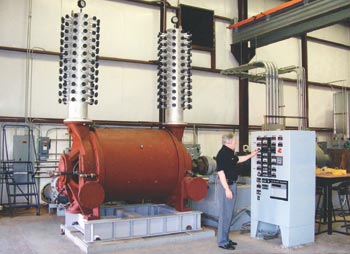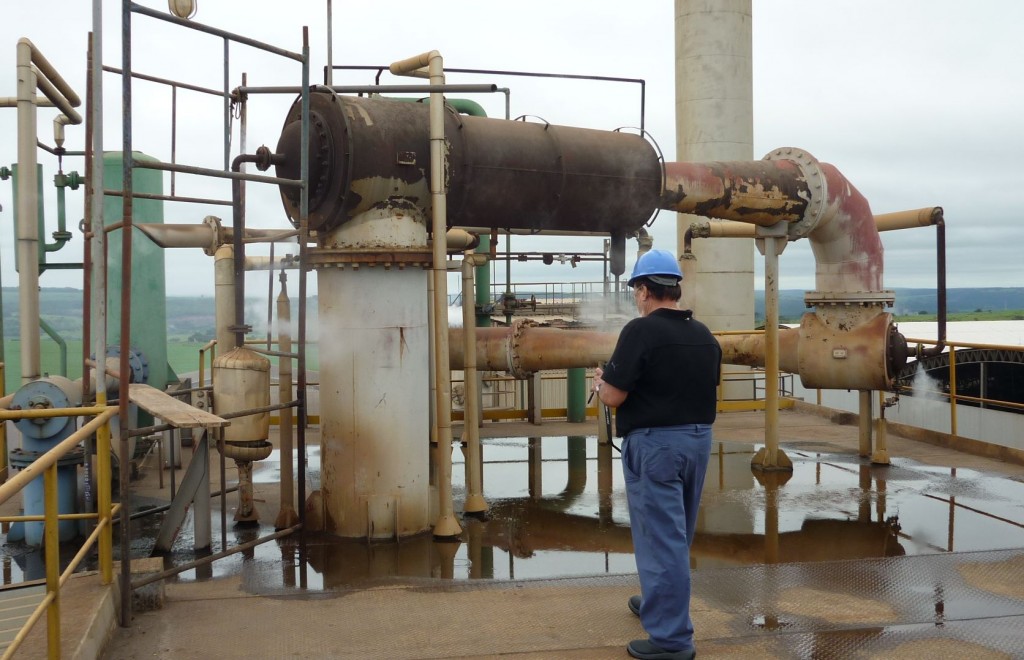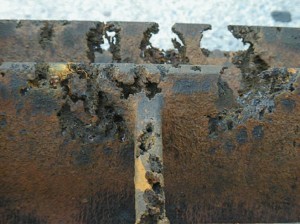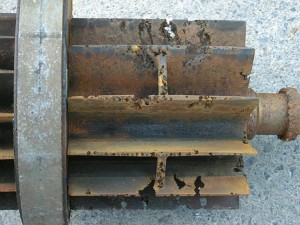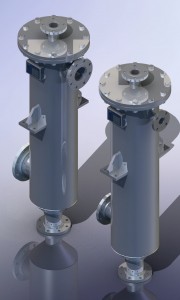SIHIRapid WEB – An Online Program From SIHI To Size Pumps – Um Programa Online Da SIHI Para Selecionar Bombas
set 14 Number of View :7524Pump Selection Online
The SIHIRapid WEB version is designed to select a Sterling SIHI product that fits to your requirements. In dependency of the operational data of your application RAPID WEB light will find the optimal product solution and additional information like performance graphs, sectional drawings and dimensional drawings are displayed.
The online program is able to size other types of pumps than liquid ring vacuum pumps.
The liquid ring vacuum pumps covered by the program are the series: LOH, LPHX, LPH, LEH, LEM, LEL
RAPID Web only works with Internet Explorer 6 or higher.
NOTE FROM THE BLOG: USE THIS PROGRAM JUST AS A REFERENCE AND ALWAYS CONTACT AN EXPERT PRIOR TO PURCHASE ANY KIND OF EQUIPMENT
Start Pump Selection SIHIRapid WEB (new window will be opened) and use as Password “SIHIRapid2008”
Inicie o programa SIHIRapid WEB (uma nova janela será aberta) e use a senha “SIHIRapid2008”
Seleção de Bombas Online
O programa WEB SIHIRapid foi projetado para selecionar a bomba Sterling SIHI que melhor atende às suas necessidades. Com base nos dados operacionais de sua aplicação o WEB RAPID vai encontrar a melhor solução e dará também informações adicionais, tais como gráficos de desempenho, desenhos de corte e desenhos dimensionais são exibidos.
O programa on-line é capaz de selecinar outros tipos de bombas , além das bombas de vácuo de anel líquido.
As bombas de vácuo de anel líquido abrangidos pelo programa são das séries: LOH, LPHX, LPH, LEH, LEM, LEL
Web RAPID só funciona com Internet Explorer 6 ou superior.
NOTA DO BLOG: USE ESTE PROGRAMA SOMENTE COMO REFERÊNCIA E SEMPRE CONSULTE UM ESPECIALISTA ANTES DE COMPRAR QUALQUER TIPO DE EQUIPAMENTO.
Spindle Thermocompressors – Termocompressores com Agulha
ago 31 Number of View :12280Here you can download the Croll-Reynolds instructions for installation, operation and maintenance of steam jet spindle operated thermocompressors.
This kind of thermocompressor is usually found in pulp and paper mills.
Click here to download the guide
Clique aqui para fazer o “download ” do manual
Aqui você poderá obter o manual da Croll-Reynolds com as instruções de instalação, operação e manutenção de termocompressores operados com agulha.
Este tipo de termocompressor é normalmente encontrado em fábricas de papel e celulose.
Method for Testing Liquid Ring Vacuum Pumps and Compressors – Método para Teste de Bombas de Vácuo e Compressores de Anel Líquido
jul 25 Number of View :7690This is an old manual from Nash, written by Harold E. Adams, chief engineer of the company in 1937. A rare and still very usefull document. This manual is the base of the HEI standard for testing liquid ring vacuum pumps.
Click here to download the Nash Orifice Method
Test bench from Vooner in North Caroline – Bancada de teste da Vooner na Carolina do Norte
Clique aqui para fazer o “download” do Método do Orifício da Nash
Este é um antigo e raro manual da Nash para teste de bombas de vácuo de anel líquido, escrito em 1937 pelo engenheiro chefe Harold E. Adams. Ele é a base da norma HEI para teste de bombas de vácuo de anel líquido.
Proper Piping for Vacuum Systems – A Maneira Correta de se Fazer Tubulações para Sistemas de Vácuo
jul 20 Number of View :32237Hello users of the blog. I have not posted anything for more than a month for some health problems in the family, but I am back.
This is an interesting article from Loren Wetzel, published in the Chemical Engineering Magazine in November 1996. It shows the mistakes in piping vacuum systems and the correct way to do it.
Click here to download the article
Clique aqui para fazer o “download” do artigo
Olá usuários do blog. Eu não tenho postado nenhum artigo nos últimos 30 dias, devido a problemas de saúde na família, mas eu estou de volta.
Este é um artigo muito interessante sobre os erros cometidos na montagem de tubulações de vácuo e a maneira correta de se fazê-lo. Ele foi escrito por Loren Wetzel e publicado na revista Chemical Enginering de novembro de 1996.
Cavitation – Cavitação
jun 03 Number of View :35624This is the best description of what is cavitation in a liquid ring vacuum pump, extracted from the book Process Vacuum System, Design & Operation.
As the suction pressure for a liquid ring vacuum pump approaches the vapor pressure of the sealant, more and more of the space in each rotor chamber is occupied by sealant vapor in equilibrium with the liquid. If the suction pressure is reduced until the sealant vapor pressure equals the total pressure, the pump capacity will drop to zero. At this point, or sometimes shortly before, bubbles of gas will begin to be formed in the sealant at points of lowest pressure. During the compression cycle, these bubbles will collapse, creating a momentary void that is rapidly filled with liquid. This is cavitation and will damage the pump. The vapor bubbles collapse with such force that the pump internals become pitted, specially the rotor ( see pictures below). For this reason, a liquid ring pump should never be “dead-headed”. A cavitating pump has an unmistakable sound: it sounds as if someone dumped a bag of marbles inside.
Esta é a melhor descrição do que é a cavitação em uma bomba de vácuo de anel líquido, extraída do livro Process Vacuum System, Design & Operation.
Quando a pressão de sucção de uma bomba de vácuo de anel líquido se aproxima da pressão de vapor do líquido de selagem, cada vez mais o espaço de cada câmara do rotor é ocupado pelo vapor do líquido em equilíbrio com o próprio líquido de selagem. Se a pressão de sucção é reduzida até a pressão de vapor do líquido de selagem se igualar à pressão total, a capacidade de sucção da bomba cairá para zero. Neste ponto, ou às vezes um pouco antes, bolhas de gás começarão a se formar no líquido de selagem, nos pontos de menor pressão. Durante o ciclo de compressão, essas bolhas vão entrar em colapso, criando um vazio momentâneo que é rapidamente preenchido com líquido. Isto é a cavitação e irá danificar a bomba. As bolhas de vapor entram em colapso com tal força que as partes internas da bomba, principalmente o rotor, ficam cheias de pequenas cavidades (veja fotos acima). Por esta razão, uma bomba de anel líquido nunca deve ser operada sem carga na sucção. Uma bomba em cavitação tem um som inconfundível: ela soa como se alguém tivesse despejado um saco de bolas de gude dentro dela
What Type of Instalation? – Que tipo de instalação?
maio 27 Number of View :8526There are three types of installation for steam jet vacuum systems: Barometric Installation, Semi-Barometric Installation and Non-Barometric Installation.
Check in the pictures below, each one of them.
Existem três tipos de instalação de sistemas de vácuo com ejetores a vapor: Instalação Barométrica, Instalação Semi-Barométrica e Instalação Não Barométrica.
Veja nos desenhos abaixo cada uma delas.
Barometric Installation – Instalação Barométrica
 Barometric Installation for direct contact condensers – Height of the barometric legs ~11 meters (at sea level)
Barometric Installation for direct contact condensers – Height of the barometric legs ~11 meters (at sea level)
Also applicable for surface condensers
Instalação Barométrica para condensadores de contato direto – Altura da perna barométrica ~11 metros (ao nível do mar)
Também aplicável a condensadores de superfície
Click “read more” for the complete article – Clique “read more” para o artigo completo
Effectively Design Shell-and-Tube Heat Exchangers – Projete Corretamente Trocadores de Calor Casco Tubo
maio 20 Number of View :43144I was looking for a picture of a single segmental baffle and a double segmental baffle to show a friend on Skype how they operate, and accidentaly found this excellent article about the design of heat exchangers written by Rajiv Mukherjee from Engineers India Ltd. It was published by CHEMICAL ENGINEERING PROGRESS • FEBRUARY 1998.
©Copyright 1997 American Institute of Chemical Engineers. All rights reserved. Copying and downloading permitted with restrictions.
Click here to download the article
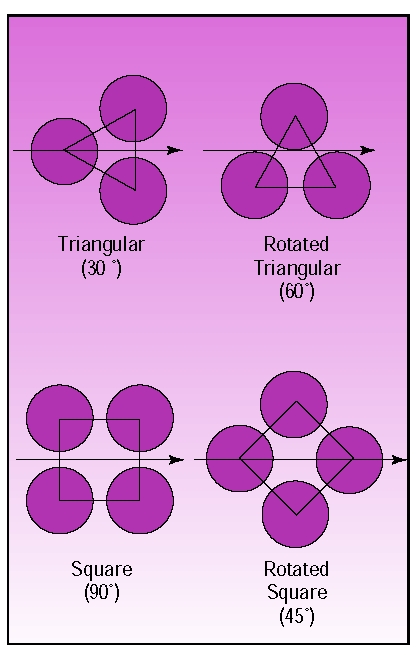 Clique aqui para fazer o “download’ do artigo
Clique aqui para fazer o “download’ do artigo
Eu estava procurando uma foto de uma chicana de segmento simples e uma duplo segmentar para mostrar como elas funcionam a um amigo no Skype , e acidentalmente encontrei este excelente artigo sobre o projeto de trocadores de calor escrito por Rajiv Mukherjee da Engineers India Ltd. Ele foi publicado na CHEMICAL ENGINEERING PROGRESS • Fevereiro 1998.
©Copyright 1997 American Institute of Chemical Engineers. All rights reserved. Copying and downloading permitted with restrictions.
Direct Contact Condensers or Surface Condensers? – Condensador de mistura ou condensador de superfície?
maio 19 Number of View :35345This article is based on material from Croll-Reynolds, Graham, Koerting and Gea Wiegand.Clique “read more” at the botton of this post to read the whole article
Este artigo é baseado em material da Croll-Reynolds, Graham, Koerting e Gea-Wiegand. Clique em “read more” na parte inferior desta postagem para ler o artigo completo.
When utilizing direct contact condensers,the process fluid comes into direct contact with the cooling water. Direct contact condensers are insensitive tofouling and are, therefore, reliable in operation. It should be noted, however, that direct contact condensers cannot be recommended if ammonia is present in the process stream. The contact with the cooling water leads to the formation of non-dissolvable carbonates and fouling.



